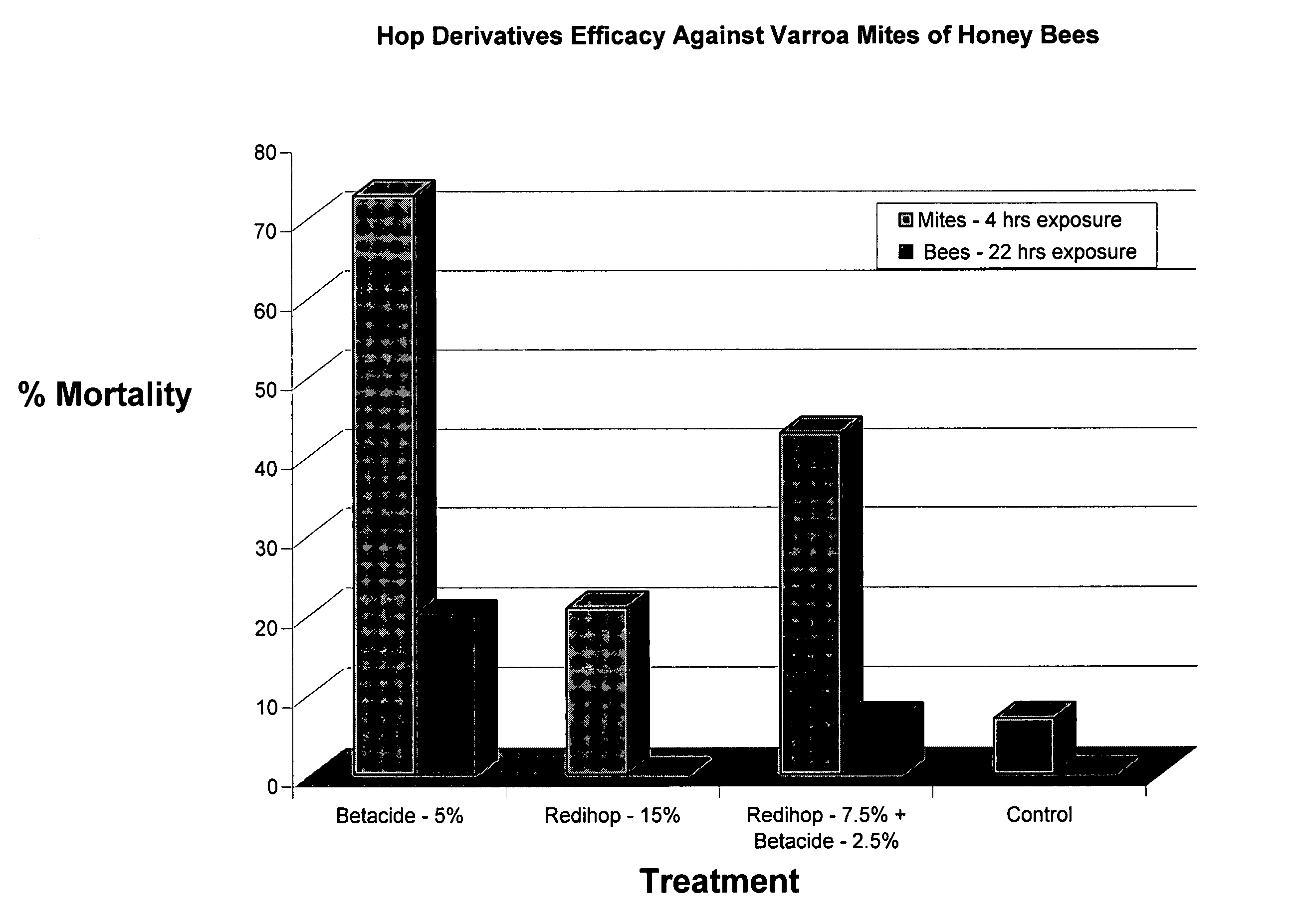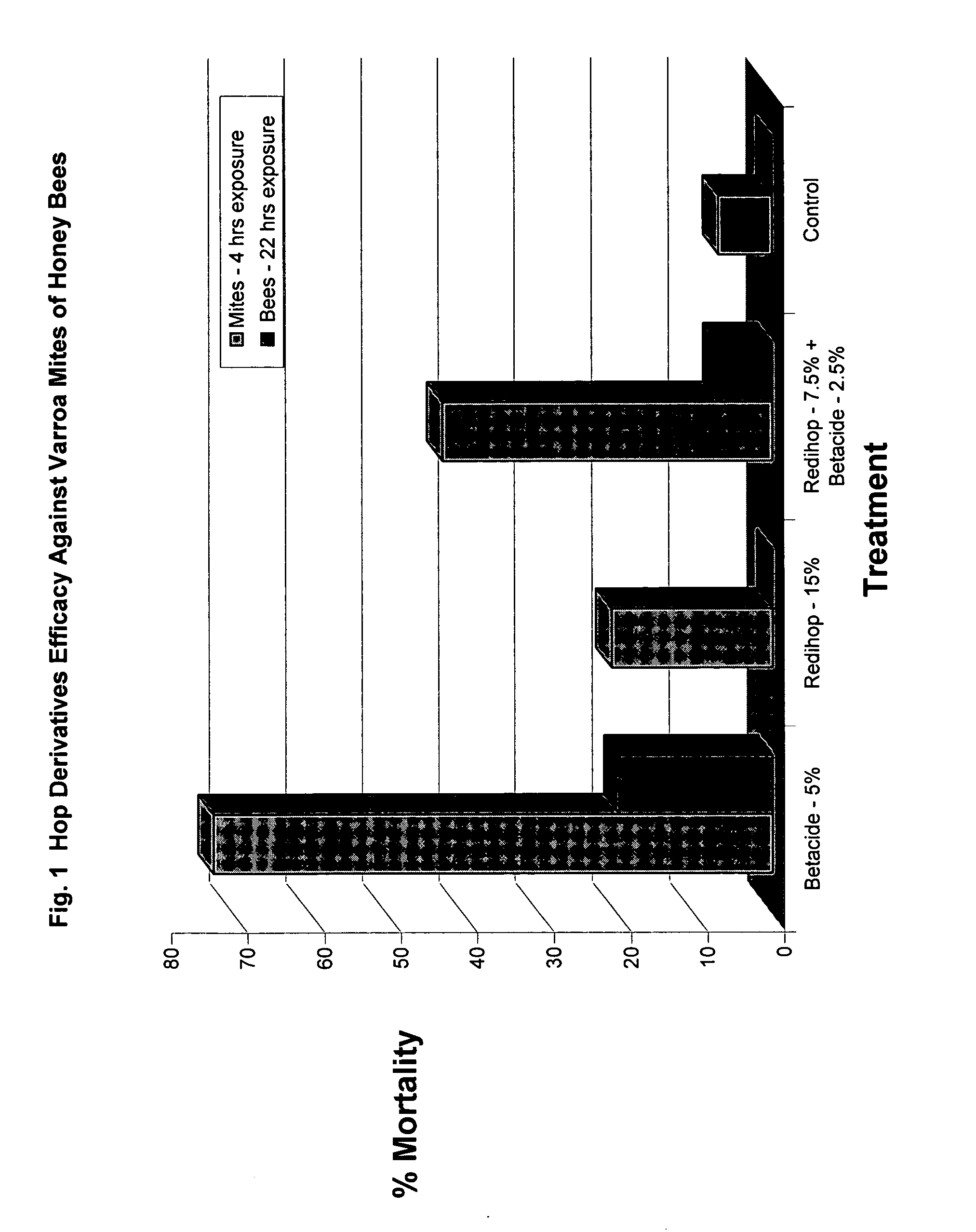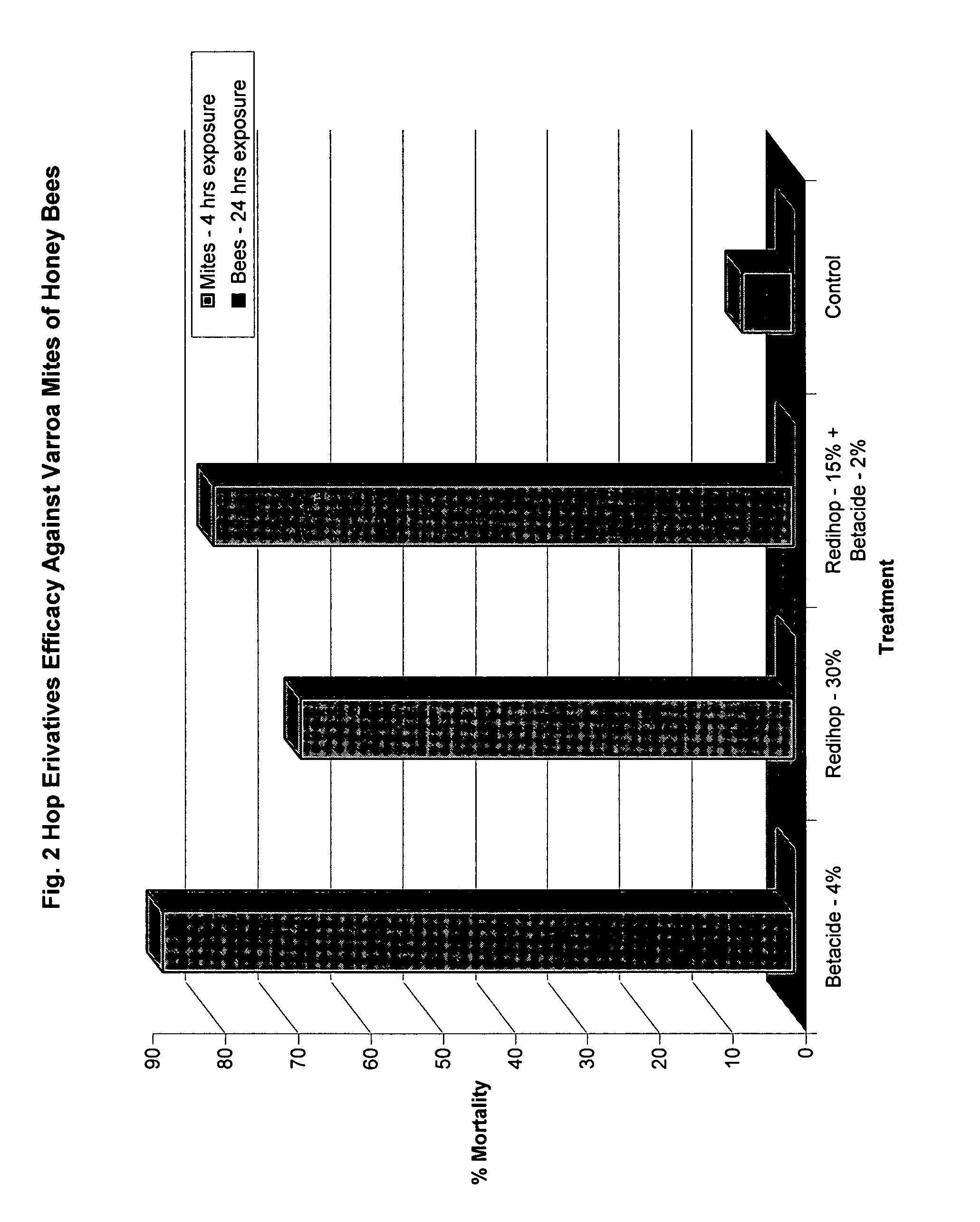Compositions and methods for controlling a honey bee parasitic mite
a technology of honey bees and mites, applied in the field of compositions and methods for controlling a honey bee parasitic mite, can solve the problems of colony-level mortality, weak immune systems of hosts, and inability to adapt to the environment, so as to reduce the success, stabilize, or slow down the growth of a mite population
- Summary
- Abstract
- Description
- Claims
- Application Information
AI Technical Summary
Benefits of technology
Problems solved by technology
Method used
Image
Examples
examples
Hop Beta and Alpha Acids Used in Miticide Screening
[0064] Beta acids, alpha acids, and a combination of beta and alpha acids were screened for efficacy as miticides. Liquid test products containing beta acids were provided in a Betastab 10A® formulation (10% beta acids) hereinafter called “Betacide”. Liquid test products containing alpha acids were provided in a Redihop® formulation (30% rhoisoalpha acids), Isohop® formulation (30% isoalpha acids), Tetrahop Gold® formulation (9% tetrahydroisoalpha acids), Hexahop Gold® formulation (5% hexahydroisoalpha acids and 5% tetrahydroisoalpha acids). A combination of alpha and beta acids were prepared by mixing equal parts Redihop® and Betacide. Powdered test products containing beta acids were provided by a magnesium salt formulation of beta acids. Powdered test products containing alpha acids were provided by magnesium salt formulations of Redihop®, Tetrahop Gold® and Hexahop Gold®.
[0065] Tests were carried out using the concentrations ...
PUM
 Login to View More
Login to View More Abstract
Description
Claims
Application Information
 Login to View More
Login to View More - R&D
- Intellectual Property
- Life Sciences
- Materials
- Tech Scout
- Unparalleled Data Quality
- Higher Quality Content
- 60% Fewer Hallucinations
Browse by: Latest US Patents, China's latest patents, Technical Efficacy Thesaurus, Application Domain, Technology Topic, Popular Technical Reports.
© 2025 PatSnap. All rights reserved.Legal|Privacy policy|Modern Slavery Act Transparency Statement|Sitemap|About US| Contact US: help@patsnap.com



